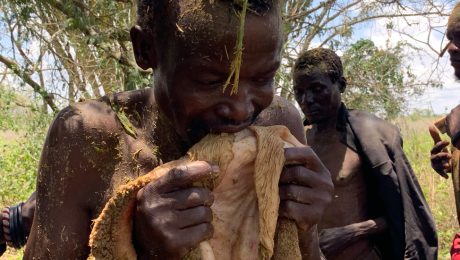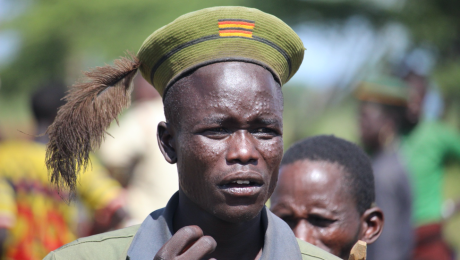Do’s and Don’t While in Karamoja
DO’S
- Wear decent cultural karimojong out fit when visiting the village or kraal.
- Learn the basic Karimojong language in order to communicate with locals.
- Please learn the local customs before visiting any local community/village.
- Respect our local village chiefs.
- Help protect our wildlife by by refusing to purchase and wildlife product.
- Help as keep Karamoja clean by refusing to use plastics.
- Greeting every one in Karamoja is very Normal and polite and also lightens up every one’s day.
- Always greet people with your right hand.
- Ask for permission before taking pictures of any cultural ceremony.
- Respect your guide and ask them any question where you need help.
DON’TS
- Don’t expose much money while on a tour
- Do not enter to any local community without a guide
- Don’t give money, sweets and kind of non native food to children, and the general local community
- Don’t seat on cooking stones
- Don’t kiss while with locals in their settlements/ villages.
- Don’t allow any reptile to enter or cross your camp fire point
- Don’t walk on streets in the middle of the night
- Don’t use lighting candles while in the tent
- Don’t drink much while hiking
- Don’t seat on the elder’s stool
- Don’t drive your car inside or close to the villages
- Published in Blog
Must-do Tour Activities while in Karamoja
VILLAGE “ERE” VISIT/STAY
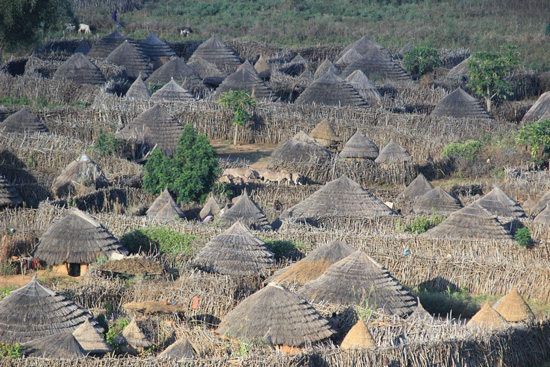
The villages are incredibly built and surrounded by sharp acacia with small entry points around the village and with a big enclosed compound in between, its where animals are kept during the rainy season.
The villages comprise of several house holds enclosed in one fence called “ere” Manyattas (Kiswahili) with very important roles played by women who are identified more with their house holds “ekal” common herd of livestock take a central position in the village / Manyattas
WHEN VISITING/STAYING WITH THE KARIMOJONGS IN THEIR VILLAGE
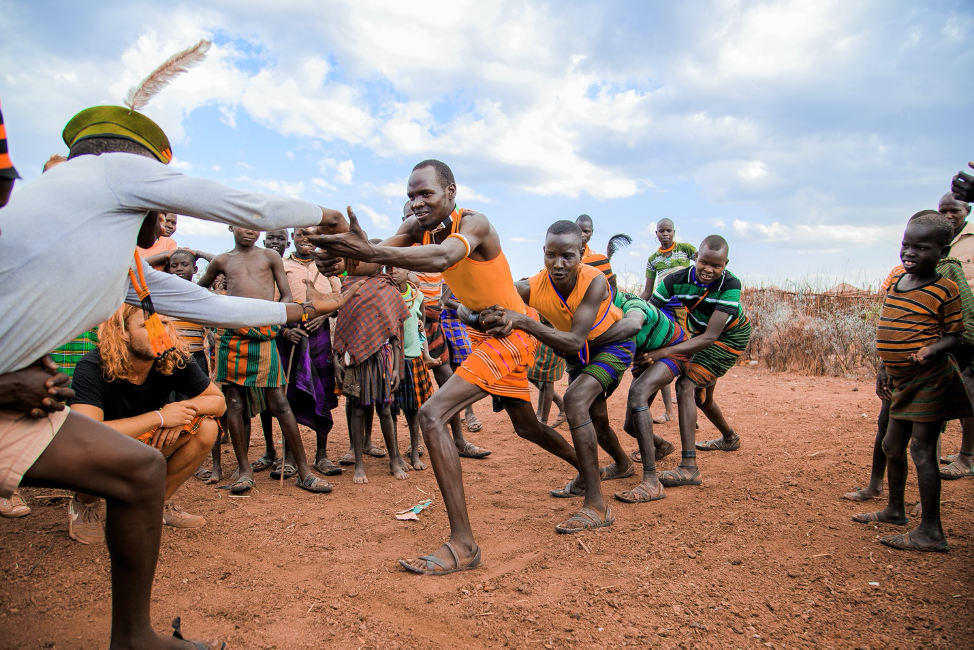
Karimojong home stay exposes you inside our Nomadic communities, participate in the daily cultural dances, games, exchange cooking lessons, Grinding, check hands with the Karimojong chiefs and have a direct interaction with crafts men and Women while learning about their history and daily way of life
Many homestay families are well adjusted to the hosting experienced. Unlike alternative accommodation styles, homestays offer a high degree of personalized attention and interaction between the host family/village and the guest.
Its un common to fine a chance to connect with local people the way you do during a homestay. The relationship is one of mutual respect and admiration and often grows into a friendship.
KRAAL “AWUI” VISIT/STAY
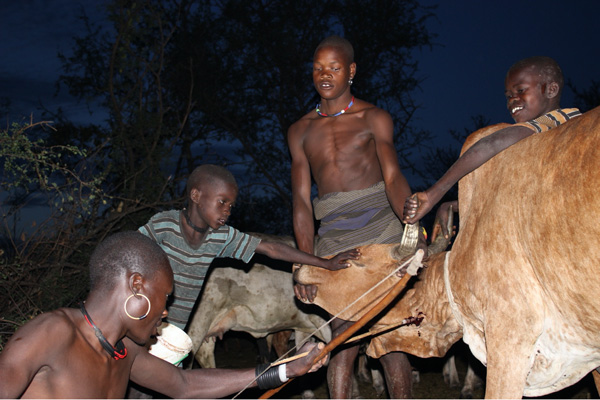
The kraal is a temporary camp for men, young boys and their livestock normally located in the middle of nowhere and in a place which is historical remembered. This is completely different from the villages, when in this tour, you will experience all about a Nomadic karimojong warriors, participate in the milking of cows and bloodletting as an activity Normally done by all karimojong Nomads, therefore, blood and milk is the only food warriors survive on in the kraal and its only once on daily basis. You will as well be having your dinner around the campfire, interacting directly with the warriors, sleeping under bright stars and participating in their daily life in the wilderness
The kraals as no houses hence the Nomadic warriors sleep in the open in the year round even if there are massive rains/winds.
Karamoja is well known for its rich and conservative culture, social organization system and age groups are still functional in the region, and the elders are highly respected and influence many decisions within and around their communities.
TRADITIONAL KARIMOJONG CEREMONIES
Karamoja is well known for its rich and conservative culture, social organization system and age groups are still functional in the region, and the elders are highly respected and influence many decisions within and around their communities.
All our traditional ceremonies are annually conducted depending on the harvest of each and every year and situations in Karamoja. For those who wish to record or witness our traditional ceremonies we do recommend that you communicate us about when you would like to come to Karamoja such that we can tell you when this events are conducted. We will be happy to help you out with this arrangement. The highlights of the common ceremonies are:
- Marriage ceremonies
- Initiation ceremonies
- Prayer ceremonies
- Ceremony of Good harvest
- Published in Blog
Must-Do Experience While in Karamoja Region of Uganda
CULTURAL TOUR TO THE KARAMOJA REGION, THE UGANDAS LAND OF WARRIOR NOMADS
Even within Uganda and Africa in general, little is known and much is misunderstood about the Karimojong Nomadic people. The Karimojong have not received much exposure through media, publications and photography like other pastoral groups, in Africa such as the Turkana and Massai. Yet the stories of the Karimojong, their culture and history, are just as powerful, timeless and enduring. Karimojongs
Karamoja has a rich heritage, authentic less changed culture, dress, dances, ceremonies, despite the undressing of the Karimojong by Idi Amin. Archeological sites, fossil sites (with fossils dating back 20 million years), historical, cultural sites such as religious shrines, centers of migration and dispersal of the different ethnic groups.
Despite the above various tourist attractions, the prevalence of peace, few tourists travel to/through Karamoja due to negative perceptions about their way of life, past war history
CURRENT EFFORTS
Following the prevalence of peace in Karamoja, efforts have been directed at attracting various investors to Karamoja. Such efforts include the positive publicity of and infrastructure (tarmac roads, electricity, among others) investments that has led to various embassies lifting previous bans of their citizens visiting Karamoja.
Tour companies have been established e.g. as Karamoja Wilderness expeditions, Karamoja Tour guides association and those from western Uganda
The Karimojong are part of an ethnic group once called the Nilo-Hamites and now referred to as the Nilotes of the plains, and they are located in the Northern, Eastern part of Uganda covering about 27000 square kilometers area of semi-arid savanna, bush and mountains, to the east, the escapement drops down into Turkana districts in Kenya; to the North is the Sudan; to the west and south are the Ugandan districts populated by different tribes
Your tour to Karamoja will expose you to the most authentic and untamed Uganda’s cultures that have been kept as a secret for years because of the insecurity which was affecting the region. Through booking with us you chance to,
- Published in Blog


